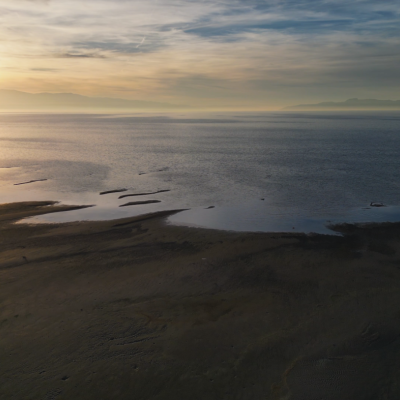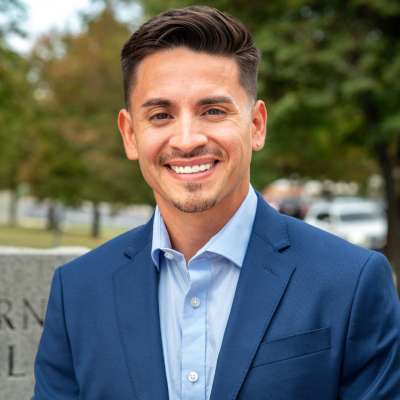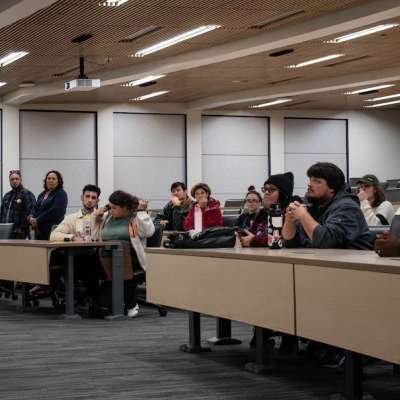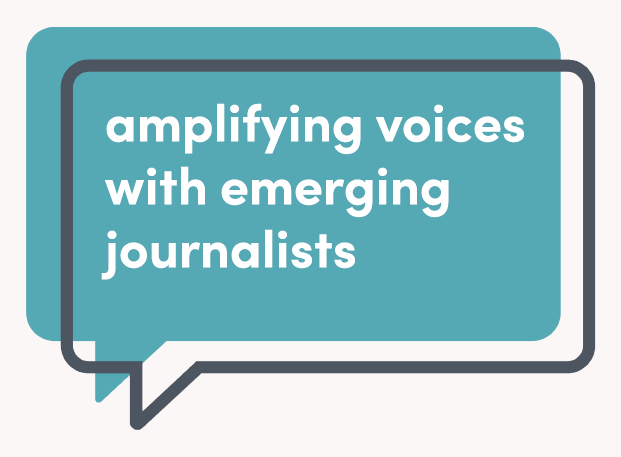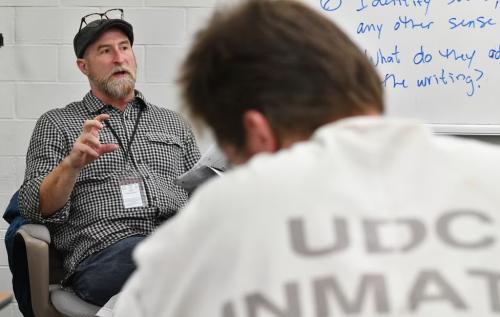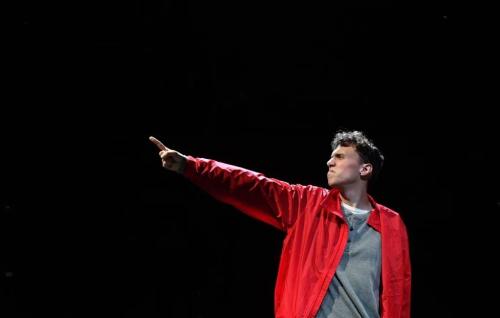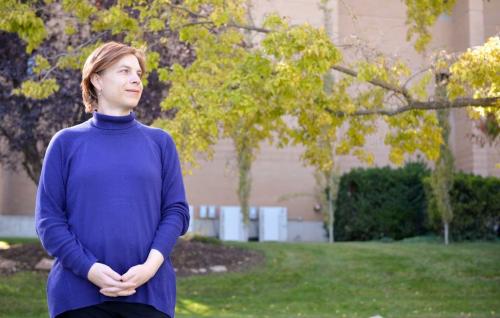When the COVID-19 pandemic threatened to suspend Salt Lake Community College’s prison education program in the spring of 2020, the school rushed to expedite a way it could continue to offer classes should future shutdowns occur.
It came in the form of 100 new laptops.
The devices, slated to arrive at the Draper prison this summer, will allow students to study from their cells, type papers, access educational resources and contact their professors, said David Bokovoy, SLCC’s director of prison education. Students will not have access to the internet.
The school purchased the laptops after an anonymous donor made a gift in March that made it possible, said Lexi Wilson, an administrative assistant for the program. Providing students laptops had been on the wish list for years, but the pandemic made it a more pressing issue, said Wilson.
Before COVID-19 appeared in Utah, about 250 students were taking classes each semester, but the pandemic forced the program to stop classes until last fall.
“We had no clue if we were going to continue or end the classes all together,” Wilson said. “This was not by choice, but the prison wasn’t allowing any programming during that time.”
The number of students currently taking classes is down to about 80.
The laptops are a fairly simple addition, but Bokovoy said its impact increases access to education significantly when classes are curtailed due to a global pandemic or forced lockdowns.
The prison education program at SLCC has become one of the biggest in-person prison education programs in the country, Bokovoy said. Since its inception in 2017, the program has served more than 600 students, per SLCC.
While most prison education programs are run off site through correspondence, Bokovoy said holding face-to-face classes remains a priority because they provide students with a positive social environment where topics of importance can be discussed with classmates and trained instructors.
The classes through the prison, he said, are no different than those offered at any one of SLCC’s 11 campuses across the Salt Lake valley.
“It is every bit as academically rigorous and demanding as what transpires on our mainstream campuses, if not more so, because of the unique challenges our students face in taking courses in that sort of environment,” Bokovoy said.
Through the program, students 18 and older who graduated high school or have a GED can pursue an Associates of Science or a general education certificate, according to Wilson. Students who are unable to perform at college level can take preparation courses in math and English.
One student, who has been incarcerated for 20 years and is required by the program to speak anonymously, said the education program makes an impact that goes beyond those taking classes.
“The presence of higher education in prison gives us a chance to radically change our lives for the betterment of everyone,” he wrote in a testimonial that Bokovoy shared. “A fully functioning higher education program creates an atmosphere of striving for knowledge and improvement. It has ripple effects that permeate the rest of the prison population.”
Many students are their first in their families to go to college, including one man who has yet to tell his mother he’s pursuing an Associates of Science degree.
“I’m about two more semesters away from that big day, and I have not told my mother because I would love to give her my degree as a Mother’s Day surprise,” he said, again in a testimonial. “I want her to be proud of me.”
Broadening access
In April 2020, SLCC was invited by the U.S. Department of Education to participate in the Second Chance Pell experiment, which is a pilot program that allows incarcerated students to qualify for need-based federal Pell Grants to help pay for postsecondary education.
This experiment, initially created in 2015, nearly doubled last year, allowing incarcerated students to use Federal Pell Grants at 130 schools located in 42 states and Washington, D.C.
In December, Congress passed the Coronavirus Response and Relief Supplemental Appropriations Act of 2021. The stimulus package included the FAFSA simplification act, which allows incarcerated people to qualify for Pell Grants, previously banned in the Clinton-era Violent Crime Control and Law Enforcement Act of 1994.
According to Prison Policy Initiative, “the average of the minimum daily wages paid to incarcerated workers for non-industry prison jobs is 86 cents.”
This has made college education for incarcerated people practically unattainable unless their prison was a part of the very recent Second Chance Pell experiment according to the Vera Institute of Justice.
A 2019 study by the Vera Institute of Justice estimates that nearly half a million inmates would be eligible for Pell grants if the ban were lifted.
Bokovoy thinks the recently passed legislation will help broaden access and reduce recidivism rates, which is the rate at which previously incarcerated people go back to prison. High recidivism rates in the U.S. have consistently been an issue.
According to a study by the Bureau of Justice Statistics that followed 404,638 state prisoners that were released in 2005, 83% “were arrested at least once during the 9 years following their release.”
Additionally, 44% of the prisoners were arrested at least once within their first year of being released.
Reducing recidivism rates, particularly for low-level drug offenders is a goal of Utah lawmakers, who passed extensive criminal justice reform in 2014. Their goals haven’t been met entirely. An audit conducted last fall “found that in 2013, the recidivism rate for low-level drug offenders was 29%” and in 2018 “that number jumped to 37%.”
Prison education has proven to be one of the best ways to combat recidivism, according to corrections experts.
In 2016, the Rand Corporation conducted a study that found that “inmates who participate in any kind of educational program behind bars—from remedial math to vocational auto shop to college-level courses—are up to 43 percent less likely to reoffend and return to prison.”
Although the initial cost of investing in prison education programs can be high, the same study found for “every dollar invested in correctional education, they save nearly five in reincarceration costs over the next three years.” Rand noted the per-person cost of prison educational programs is between $1,400 and $1,700.
For this reason, Bokovoy believes “it makes sense for taxpayers to prioritize higher education in the prison system” from a financial perspective.
Going forward, Bokovoy noted he hopes to expand the prison education system in Utah by broadening program offerings to juvenile detention centers, possibly as soon as 2022.
With the first buildings of the new Salt Lake prison facility opening near the airport by the end of this year, Bokovoy said the educational resources will also receive a sizeable upgrade for “all incarcerated individuals in the state of Utah.”
But more than anything, Bokovoy said empathy for incarcerated students is crucial.
“All of these men and women have a story,” he said. “Everyone deserves a chance to better themselves by pursuing education, and that would certainly include those who have made mistakes in the past, like we all do.”







